Most Recent HashiCorp Vault-Associate Exam Dumps
Prepare for the HashiCorp Certified: Vault Associate (002) exam with our extensive collection of questions and answers. These practice Q&A are updated according to the latest syllabus, providing you with the tools needed to review and test your knowledge.
QA4Exam focus on the latest syllabus and exam objectives, our practice Q&A are designed to help you identify key topics and solidify your understanding. By focusing on the core curriculum, These Questions & Answers helps you cover all the essential topics, ensuring you're well-prepared for every section of the exam. Each question comes with a detailed explanation, offering valuable insights and helping you to learn from your mistakes. Whether you're looking to assess your progress or dive deeper into complex topics, our updated Q&A will provide the support you need to confidently approach the HashiCorp Vault-Associate exam and achieve success.
The questions for Vault-Associate were last updated on May 1, 2025.
- Viewing page 1 out of 11 pages.
- Viewing questions 1-5 out of 57 questions
Use this screenshot to answer the question below:
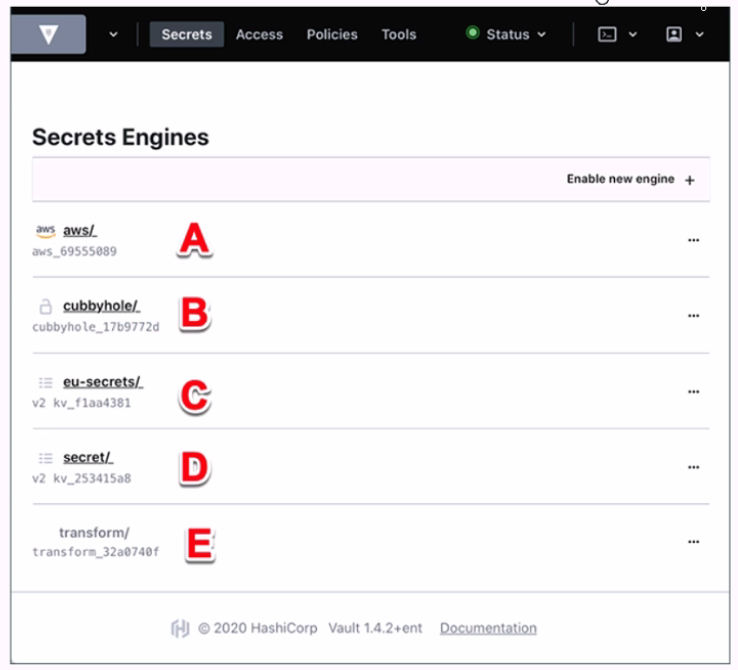
Where on this page would you click to view a secret located at secret/my-secret?
In the HashiCorp Vault UI, secrets are organized in a tree-like structure. To view a secret located at secret/my-secret, you would click on the ''secret/'' folder in the tree, then click on the ''my-secret'' file. In this screenshot, the ''secret/'' folder is located at option C. This folder contains the secrets that are stored in the key/value secrets engine, which is the default secrets engine in Vault. The key/value secrets engine allows you to store arbitrary secrets as key/value pairs. The key is the path of the secret, and the value is the data of the secret. For example, the secret located at secret/my-secret has a key of ''my-secret'' and a value of whatever data you stored there.
[KV - Secrets Engines | Vault | HashiCorp Developer]
Which of the following is a machine-oriented Vault authentication backend?
A developer mistakenly committed code that contained AWS S3 credentials into a public repository. You have been tasked with revoking the AWS S3 credential that was in the code. This credential was created using Vault's AWS secrets engine and the developer received the following output when requesting a credential from Vault.

Which Vault command will revoke the lease and remove the credential from AWS?
You have been tasked with writing a policy that will allow read permissions for all secrets at path secret/bar. The users that are assigned this policy should also be able to list the secrets. What should this policy look like?
A.
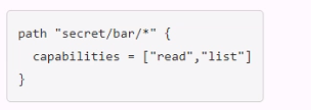
B.
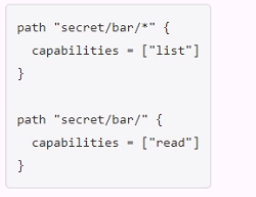
C.
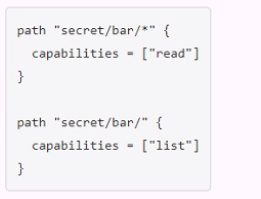
D.
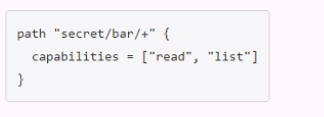
The other options are not correct because they either grant too much or too little permissions. Option A would grant both read and list permissions to all secrets under secret/bar, which is more than what is required. Option B would grant list permissions to all secrets under secret/bar, but only read permissions to secret/bar itself, which is not what is required. Option D would use an invalid character (+) in the policy, which would cause an error.
Policy Syntax | Vault | HashiCorp Developer
Your DevOps team would like to provision VMs in GCP via a CICD pipeline. They would like to integrate Vault to protect the credentials used by the tool. Which secrets engine would you recommend?
Unlock All Questions for HashiCorp Vault-Associate Exam
Full Exam Access, Actual Exam Questions, Validated Answers, Anytime Anywhere, No Download Limits, No Practice Limits
Get All 57 Questions & Answers